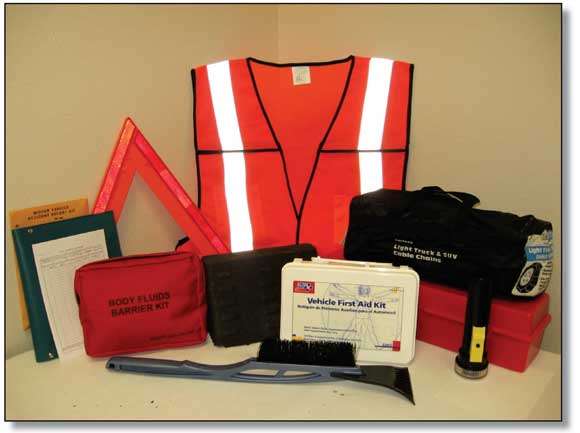Chapter 4—Fleet Credit Card
Each vehicle is assigned a fleet credit card. The fleet credit card must be used to pay for all fuel, services, and repairs of motor vehicles.
In addition, your fleet credit card should be used to pay for tow services, car washes, and expendable items, such as wiper blades, motor oil, light bulbs, and similar items.
Contact your fleet or maintenance manager for authorization before taking a vehicle to a commercial vendor for maintenance and repair work. Repairs or necessary vehicle purchases up to $1,000 can be made by the operator using the fleet card after the operator has contacted the unit fleet manager. Purchases/repairs between $1,000 and $3,000 must be authorized by the forest or station fleet manager (some units may have established a lower card limit, such as $500). Purchases larger than $3,000 require advance approval from a warranted procurement person and the region/ station/area fleet manager.
For additional fleet credit card training or help with problems associated with your card, contact your fleet manager.
Tips To Reduce Vehicle Operating Costs
- All transactions are monitored and subject to
audit.
- Purchase of premium fuel is prohibited.
- All receipts for fleet credit card purchases
must be retained and turned in with your
monthly USE record.
- All receipts must be retained for auditing
purposes.
- Unauthorized purchases are prohibited.
- The fleet credit card must be secured at all
times. Do not leave it in an unattended
vehicle where it might be stolen.
- Ensure (in advance) that the vendor accepts
the fleet credit card.
- Know the credit card's limits.
A 2007 Office of Inspector General (OIG) audit found that some Forest Service employees were not aware of the basic requirements for using a fleet credit card. All employees should know the five basic requirements:
- The fleet credit card is for official
Government business only. Under no
circumstances is the card to be used for
personal purchases or as identification
for personal purchases (USDA Departmental
Regulation No. 5400-006).
- Only one fleet credit card can be issued
to each motor vehicle, aircraft, boat, and
piece of equipment that requires fuel.
Anyone using a fleet credit card assigned
to a vehicle or piece of equipment
shall use the card only for the
vehicle or piece of equipment to which
the card is assigned (OIG Audit 08601-
03-TE, March 30, 2007; USDA Departmental
Regulation No. 5400-006).
- Anyone using a fleet credit card assigned
to a vehicle with an odometer
must, whenever prompted by the card
machine, enter a valid odometer reading
when purchasing fuel (OIG Audit
08601-03-TE, March 30, 2007; USDA
Departmental Regulation No. 5400-
006).
- Anyone using a fleet credit card must
collect and maintain a receipt for that
transaction. Once a month the receipts
will be given to the Local Fleet Program
Coordinator (OIG Audit 08601-03-
TE, March 30, 2007).
- Use the grade (octane rating) of fuel recommended by the motor vehicle manufacturer when fueling motor vehicles owned or leased by the Government. Do not use premium grade gasoline in any motor vehicles unless the vehicle owner/operator manual specifies premium grade gasoline (USDA Agriculture Property Management Regulations (AGPMR) chapter 110-34; Federal Management Regulation (FMR), part 102-34).
It is the responsibility of the driver to report any and all accident damage to their supervisor, no matter how slight (FSH 7109.19, sec. 42.3) and to complete the required paperwork immediately (FSH 6709.12, sec. 32.1).
If you are involved in an accident, your authorization to operate Forest Service vehicles or equipment may be suspended pending the outcome of the final accident investigation.
The Government may defend any claim or suit against the operator of a Government-owned or -leased motor vehicle resulting from an accident, if the employee was acting within the scope of employment. If the employee was not acting within the scope of employment, the Government will not pay the claim and will not defend the suit. The Office of the General Counsel decides whether the employee acted within the scope of employment.
Each vehicle log book or glove box should contain an AD-651 Motor Vehicle Accident Report Kit or similar packet. This kit should include:
- Region, station, or unit instructions for reporting and investigating motor vehicle accidents
- SF-91 Motor Vehicle Accident Report
- SF-94 Statement of Witness
- CA-1 Federal Employee's Notice of Traumatic Injury and Claim for Continuation of Pay/Compensation
- AD-112 Report of Unserviceable, Lost, Stolen, Damaged, or Destroyed Property
- CA-16 Authorization for Examination and/or Treatment (optional)
- Pencil and note paper
In addition, each new vehicle will contain most or all of the following safety items:
- First aid kit
- Two body fluid barrier kits
- Fire extinguisher
- Highway warning devices (road triangles)
- Safety vest(s)
- Tire chains (if approved by vehicle manufacturer)
- Wheel chock block
- Flashlight
- Window scraper
Check monthly to ensure that dated supplies are replaced. Projects are responsible for replacing any dated or missing items.






